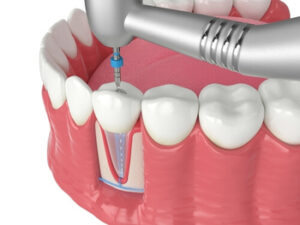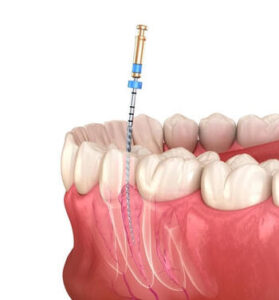When you hear root canal, it might conjure up thoughts of pain and long hours in the dental chair. But the truth is far less daunting! Root canal treatment is a widely performed dental procedure aimed at preserving your natural tooth and relieving intense pain resulting from infection or damage. In this guide, we’ll walk you through the typical root canal procedure, its duration, and what to expect during your appointments.
What Is a Root Canal and Why Might You Need One?
A root canal, also called endodontic treatment, is a dental approach to treat an infected or damaged tooth. It focuses on removing infected pulp, a soft tissue inside the tooth composed of blood vessels, connective tissue, and nerves. The goal is to eliminate the infection, prevent further damage, and restore dental health.
The Importance of Early Diagnosis
Catching a root canal infection early is critical to preventing more severe complications. An untreated infection can lead to abscess formation, bone loss, or even tooth extraction. Recognising the early signs can make all the difference.
Signs of a Root Canal Infection
- Persistent tooth pain, especially when chewing or biting
- Prolonged sensitivity to hot or cold foods and drinks
- Swollen or tender gums
- Darkening or discolouration of the tooth
- Pus or drainage around the affected tooth
Preparing for Your Root Canal Appointment

- Eat a Light Meal: Avoid heavy meals before the procedure, but don’t skip eating entirely.
- Discuss Medications: Let your dentist know about any medications you are currently taking, including blood thinners.
- Plan Post-Treatment Rest: Arrange for some downtime after the procedure, especially if sedation is used.
- Ask Questions: Clear up any doubts or concerns with your dentist to feel confident about the treatment.
By taking these steps, you can ensure a successful root canal treatment with minimal discomfort.
The Root Canal Process: What Happens During the Procedure?
The root canal treatment process involves several key steps, ensuring the tooth is cleaned, sealed, and protected.
Diagnosis and Consultation
The process begins with a consultation with a root canal dentist or dental professional. An X-ray is taken to evaluate the extent of the infection or damage to the affected tooth. If root canal therapy is mandatory, your dentist will outline the procedure and create a customised treatment plan for you.
Administering Local Anaesthetic
Before the procedure starts, a local anaesthetic is used to numb the area around the tooth, ensuring you feel comfortable. While you may experience mild discomfort from the injection, the anaesthetic makes the rest of the procedure tolerable.
Accessing the Pulp Chamber
The dentist will make a small hole in the crown of the tooth to reach the pulp chamber and root canal system.
Cleaning Out the Infected Pulp
Using certain tools, the dentist removes the infected pulp, along with any bacteria and decayed tissue. The tooth canal is then thoroughly cleaned and shaped to prepare for filling.
Filling the Root Canal
The cleaned canals are filled with a sterile compound called gutta-percha, a rubber-like material that seals the canal and prevents future infection.
Placing a Temporary Filling
A temporary filling is often placed over the tooth to protect it until the permanent filling or dental crown is ready.
Final Restoration
During a follow-up appointment, the temporary filling is replaced with a permanent filling or a dental crown. This restores the tooth’s structure and protects it from further damage.
How Long Does a Root Canal Take?
The duration needed to complete a root canal procedure varies based on several factors, such as:
- The complexity of the root formations
- The tooth being treated (molar teeth typically take longer than front teeth)
- The extent of the infection
A typical root canal appointment lasts between 60 and 90 minutes. In some cases, particularly for molars or severely infected teeth, you may need two or more appointments to complete the treatment.
Here’s a breakdown:
- Simple Root Canal: Around one hour
- Complex Cases or Molar Teeth: 90 minutes to 2 hours, possibly spread across two visits
What to Expect After a Root Canal
- After the procedure, it’s normal to experience mild discomfort or sensitivity, which can be easily managed with over-the-counter pain relievers. Following a root canal, you should:
- Refrain from chewing on the treated tooth until the final restoration has been completed.
- Practise good oral hygiene to prevent further infection.
- Stick to your dentist’s guidelines for maintaining the treated tooth properly.
Once the dental crown or permanent filling is placed, the tooth can function just like any other natural tooth.
Why Choose a Root Canal Over Tooth Extraction?
A root canal saves your natural tooth, maintaining the integrity of your smile and bite. While tooth extraction might seem like a simpler solution, replacing a missing tooth often requires additional dental work, such as bridges or implants, which can be costly and time-consuming.
Saving your natural tooth with a root canal supports excellent oral health and ensures long-term functionality.
Post-Root Canal Tooth Care
To ensure the lasting success of your root canal treatment, follow these guidelines:
- Maintain Good Oral Hygiene: Brush and floss daily to keep your teeth and gums healthy.
- Regular Dental Check-ups: Schedule routine appointments with your dentist every six months for professional advice tailored to your dental health needs.
- Protect the Treated Tooth: If a dental crown is placed, avoid biting on hard foods that could damage it.
What Causes a Root Canal Infection?
Root canal infections occur when the tooth’s soft inner tissue, called the dental pulp, becomes inflamed or infected. This tissue contains blood vessels, connective tissue, and nerves essential for maintaining a healthy tooth. The primary causes of root canal infections include:
- Tooth Decay: Advanced tooth decay can create deep cavities, allowing bacteria to penetrate the pulp chamber. Once inside, the bacteria multiply, causing infection.
- Cracked or Chipped Teeth: A crack or chip in the tooth may expose the dental pulp, providing a pathway for bacteria to enter.
- Dental Trauma: Injuries, even those without visible damage, can disrupt the pulp tissue and lead to inflammation or infection.
- Repeated Dental Procedures: Extensive dental work on the same tooth can weaken its structure and increase the risk of pulp infection.
- Untreated Tooth Abscess: If left untreated, an abscess caused by an infection can spread to the pulp chamber.
Once bacteria enter the pulp chamber, they cause swelling and pressure inside the tooth, often resulting in severe pain. Without prompt treatment, the infection can extend to surrounding tissues and bones, leading to more significant oral health issues.
The Role of Dental X-rays
Dental X-rays play a vital role in identifying root canal infections. While visible signs such as swelling or pain can alert you to a problem, X-rays help detect hidden issues, such as small abscesses, damage to the bone, or the extent of tooth decay. These images allow dental professionals to provide accurate diagnoses and create effective treatment plans.
Why Is a Dental Crown Often Recommended After a Root Canal?
Following a root canal procedure, the tooth becomes hollow and more fragile. A dental crown is typically recommended to regain its strength and appearance.
Purposes of a Dental Crown
- Protection: A crown acts as a protective barrier, shielding the treated tooth from further damage or decay.
- Strength and Durability: It reinstates the tooth’s strength to handle the forces of chewing and biting.
- Aesthetic Appeal: Crowns are designed to resemble the colour and shape of your natural teeth to guarantee a seamless smile.
Without a dental crown, the treated tooth is more likely to fracture or deteriorate over time, compromising the success of the root canal therapy.
Root Canal vs Tooth Extraction: Which is the Better Choice?
Root canal treatment and tooth extraction are both solutions for dealing with a severely infected or damaged tooth. However, they differ significantly in terms of benefits and long-term outcomes.
Root Canal Therapy
- Preserve the Natural Tooth: By treating the infected pulp, a root canal saves the tooth and maintains your natural bite alignment.
- Lower Long-Term Costs: While the initial cost may seem high, root canals eliminate the need for replacements like implants or bridges.
- Faster Recovery: Healing after a root canal is typically quicker and less invasive than after an extraction.
Tooth Extraction
- Immediate Removal of the Tooth: Extraction is often quicker but leaves a gap in your smile that needs to be addressed with replacements.
- Additional Costs: Replacing a missing tooth with an implant, bridge, or denture can significantly increase costs and treatment time.
- Compromised Functionality: Losing a tooth can affect chewing, speech, and overall dental health.
In most cases, preserving the natural tooth through a root canal is preferable for maintaining oral health and aesthetics.
Root Canals for Molar Teeth vs. Front Teeth
Root canals for molars tend to be more complex and time-consuming than those for front teeth.
Why Molars Take Longer
- Anatomy: Molars have multiple tooth canals (often three or more), while front teeth usually have just one.
- Accessibility: Molars are harder to reach, requiring more precision during the procedure.
- Root Formations: The root formations in molars can be curved or intricate, adding to the complexity.
On the other hand, front teeth are more straightforward to treat due to their simpler structure. As a result, the duration of the procedure depends heavily on the type and location of the affected tooth.
Costs Associated with Root Canal Treatment
In Australia, the cost for a root canal typically starts at $700 per tooth, depending on factors like:
- Tooth Type: Treating molars costs more than front teeth due to their complexity.
- Severity of Infection: Advanced infections may require additional procedures, increasing the overall cost.
- Restorations: Adding a dental crown can cost an additional $1,000 as a starting price for the crowns.
Discussing your treatment plan and costs with your root canal dentist ensures transparency and proper budgeting.
Alternatives to Root Canal Therapy
While root canal therapy is considered the optimal option for saving a tooth, alternatives include:
- Tooth Extraction: Removing the infected tooth eliminates the problem but creates a gap in your smile.
- Dental Implants: An implant replaces the extracted tooth, but it is a more expensive and lengthy process.
- Dental Bridges: Bridges can fill the gap but require altering neighbouring teeth for support.
These alternatives often require more extensive dental work, making root canal therapy a more practical and cost-effective solution.
How to Prevent Needing a Root Canal
Prevention is always better than cure. To minimise your risk of needing a root canal:
- Maintain Good Oral Hygiene: Brush twice daily, floss regularly, and use fluoride toothpaste.
- Limit Sugary Foods: Minimise your intake of sugary and acidic foods that promote tooth decay.
- Wear a Mouthguard: Protect your teeth while engaging in contact sports or if you grind your teeth at night.
- Visit Your Dentist Regularly: Routine check-ups can catch issues before they escalate.
- Treat Dental Issues Early: Don’t ignore mild tooth pain or discomfort, as it could signal early infection.
Psychological Benefits of Saving a Natural Tooth
Keeping your natural tooth intact through a root canal has remarkable psychological advantages:
- Preserved Confidence: Keeping your natural smile intact can boost self-esteem.
- Reduced Anxiety: Root canal therapy is less invasive than dealing with tooth loss and replacements.
- Improved Oral Health: Knowing your tooth is saved reinforces positive feelings about your overall dental care.
Common Misconceptions About Root Canal Therapy
Root Canals Are Painful

A Root Canal Takes Multiple Visits
While some cases require multiple appointments, many root canals can be completed in a single session, depending on the complexity of the tooth canal system.
Root Canals Are Not Effective
Root canal treatment is highly successful when carried out by skilled dentists, and with proper care, the treated tooth can endure a lifetime.
Final Thoughts
A root canal procedure might sound intimidating, but it’s a straightforward and highly effective way to treat an infected or damaged tooth. By removing the infected tissue, sealing the tooth canal, and restoring it with a permanent filling or crown, root canal therapy can save your natural tooth and alleviate severe pain.
If you have persistent tooth pain or think you may need a root canal, seek treatment promptly. Contact an experienced dentist for professional advice tailored to your dental health needs.
For further information on root canal treatment, reach out to Dental 266 at 02 9051 0600 and restore your smile with confidence!
Note: Any surgical or invasive procedure carries risks. Before proceeding, you should seek a second opinion from an appropriately qualified health practitioner.
References:
Medical News Today. (n.d.). Root canal: Procedure, benefits, and complications. Retrieved from https://www.medicalnewstoday.com/articles/142780
Healthline. (n.d.). Tooth extraction: What you need to know. Retrieved from https://www.healthline.com/health/tooth-extraction
Cleveland Clinic. (n.d.). Teeth sensitivity: Symptoms, causes, and treatment. Retrieved from https://my.clevelandclinic.org/health/symptoms/10954-teeth-sensitivity
Colgate. (n.d.). What is good oral hygiene? Retrieved from https://www.colgate.com/en-us/oral-health/adult-oral-care/what-is-good-oral-hygiene
National Center for Biotechnology Information (NCBI). (n.d.). Local Anaesthesia Techniques in Dentistry and Oral Surgery. Retrieved from https://www.ncbi.nlm.nih.gov/books/NBK580480/







